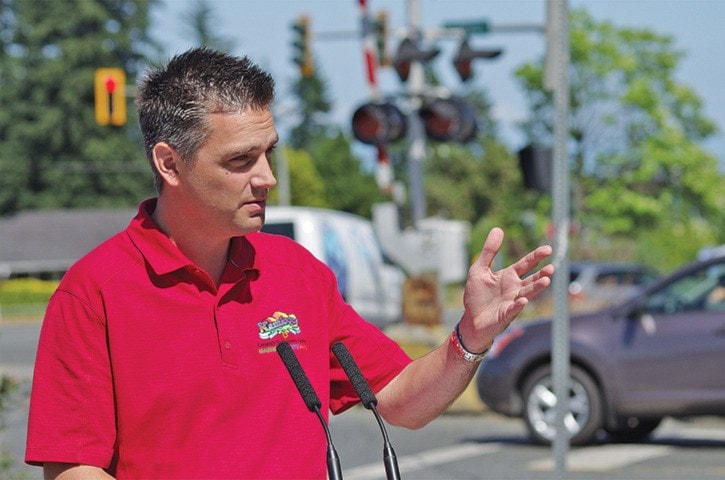Safety upgrades will make a world of difference for ambulance patients travelling one of Nanaimo’s most dangerous intersections, according to B.C. Ambulance unit chief Gord Cross.
B.C. Transportation Minister Todd Stone announced Thursday the province will cover half the budgeted $3-million cost for improvements to one of the “worst spots on the Island for collisions” at Boundary Avenue, Northfield Road and Highway 19A.
The three-way intersection saw 340 collisions between 2007 and 2011, and was named the third-highest crash intersection by ICBC in 2013. The roadways are routes to the Inland Island Highway, Nanaimo Regional General Hospital and Woodlands Secondary School and in recent years, Stone said, traffic volume has increased significantly. A section of the intersection over the railway is also bumpy and rough. People have told the minister it feels like “your fillings are going to fall out” and paramedics are concerned movement over the tracks, even at slow speeds, can cause additional stress for patients.
It is a bad intersection, said Cross. Up to 20 patients each day shift are transported through the intersection. The slope and quality of pavement leading up to the railroad tracks puts ambulances on an angle and with stiff suspension, causes the vehicles to rock. It can affect people who are on a backboard with a broken hip, or facing backwards and already nauseous, he said.
The renewed commitment by the B.C. government will revive upgrades put on hold last year, after the City of Nanaimo discovered the work would cost $900,000 more than the amount the province and municipality originally agreed to split. Improvements, now slated for this fall, will include a smoother road over rail tracks, a new southbound acceleration land from Northfield Road to the highway and a traffic light and westbound left-turn bay on Northfield Road to Boundary Avenue. There will also be changes made for pedestrians and cyclists.
“This is designed to open the intersection up for congestion and access and for us that’s a big deal,” said Cross, who is “thrilled” work will also involve smoothing out and repaving the slope in the intersection. “It’s just going to make a world of difference to our patients.”
The provincial announcement is part of B.C. on the Move, a 10-year transportation plan, which will see $30-million invested in an intersection improvement program and announcements in Nanaimo and the region that span different transportation modes.
Stone anticipates the intersection plan will dramatically reduce conflicts between vehicles, cyclists and pedestrians, prevent injuries and save lives.
“There’s a great deal of unanimity across all levels of government and all organizations and the community at large that this is a high-priority location for an investment like this and that’s borne out by the [collision] statistics.”
